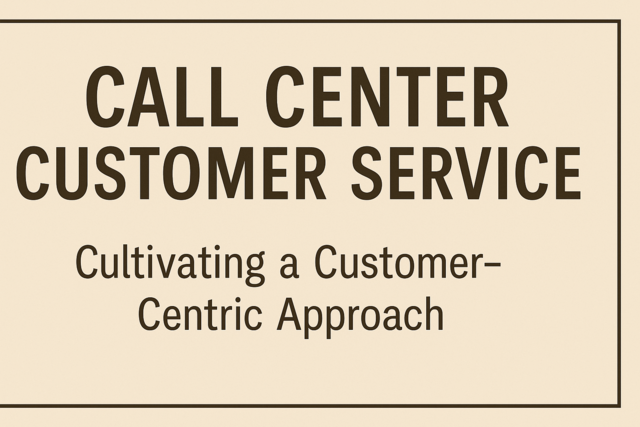Although many Help Desks operate as part of a much larger company, or within a company, your Help Desk should be considered a business: You have products and services, and you have customers who need them. Management is not going to automatically fund your operations just because you exist, so you need to make sure they understand what you have to offer. Similarly, your customers will not automatically start calling you when you open your doors. In short, you need to market your Help Desk to communicate to the company � and the community, if necessary � that you are open for business and let them know your expertise.
There are four major components of marketing for Help Desks that we will discuss:
-
Image
-
Selling value
-
Education
-
Communication
Before we discuss these four areas, there are some major mistakes that some Help Desks make that need to be addressed. Many Help Desks make the mistake of assuming they do not need to market themselves, because they have no competition.They assume that since they are the only Help Desk in the company, the employees and management have no choice but to come to them for services. This is not necessarily the case.Help Desks can be expensive to maintain, and management will keep a close watch on this cost. The company does have other options in addition to your Help Desk. They might find it cheaper or more efficient to outsource the Help Desk's services, if they do not find value in your Help Desk. Your marketing efforts will need to reassure management that your Help Desk delivers value to the company at all times.
The second mistake some Help Desks make, is to assume that great marketing will help mask poor performance. This is not true. Your Help Desk's performance will be on display for all to see, and no level of marketing will help obscure it. Your marketing efforts need to be honest; never try to market a service you do not have, or that you are not properly trained in.
Image
Your Help Desk's image is how your customers perceive you. Everything you do, and everything you say, will help contribute to that image. The very simple act of answering the telephone begins the process by which your customers start to generate a perception of your image. If one of your analysts answers the phone in a tired, bored voice, the very first point of contact for the calling employee will be a negative experience. That employee will begin to generate an opinion of your image.
Image is important, because customers will resist calling your Help Desk if they perceive a negative image. If customers stop calling, several things happen: Your ability to keep the company operating efficiently diminishes, and your customers will stop calling you. If they stop calling you, your Help Desk will have a much harder time justifying its existence and expense to the company.
You can improve image by making your Help Desk more customer-friendly. Is it convenient for customers to contact you, and is the experience a pleasant one for customers? Also, your communication will have a large impact on your image � keep your communication customer-friendly, professional, and courteous. You need to regularly review your image by using customer surveys.
Selling Value
When it comes time to review the company's entire budget, no department will be immune to budget cuts. This is especially true of departments that typically do not directly contribute revenue to the bottom line, and that is the case with most Help Desks. This is why it is important, at all times, to sell your value. As we have discussed, it's important to add value to a company, but it is equally important to make sure people are aware of this added value.
You sell your value by making people aware of your performance and successes. Those metrics that you calculated are great pieces of information that need to be communicated to the company and your entire customer base. When you communicate favorable metrics, you are selling your value to the organization.
While performance (scores, resolution times, etc.) is important in selling value, so are your more intangible successes. Did your recent training go extremely well? Consider marketing your customers' comments and testimonials about the training. Your successes are more than just performance scores � they are about how you are making your company and your Help Desk more efficient.
Formal reports (e.g. newsletters), as well as informal communications, can help you sell your value. Use communication wisely � to resolve problems, advertise your services, and market your value.
Education
Offering training to your company is, in itself, an opportunity to market your services. Training employees accomplishes many goals. It markets your services to the customer base (the employees), and it will greatly reduce the number of calls your Help Desk receives. When you empower people with knowledge to help themselves, this will free your Help Desk's resources to work on improvements to the company, rather than dealing with problems.
A Help Desk must always communicate properly, and it is an integral part of marketing. Your communication must always be in two directions: communicating important updates and alerts to customers, and listening to your customers' feedback.
Here are some of the most important items that must be communicated to your customers:
-
Service interruptions � either planned or unplanned.
-
Emergencies
-
Good news and improvements
-
Changes
A service interruption can either be planned or unplanned. If you are upgrading the network, you will most likely have it planned for weeks. Let your customers know about the outage in advance, and remind them frequently. Sometimes, though, an interruption happens without warning. Your phone system might be temporarily down. Alert your customers of this as soon as possible, and always let them know what you are doing to address the issue, and an estimated time to resolve the issue, if known. Similarly, emergencies must always be communicated to your customers quickly. You should let them know the exact steps they must take during the emergency.
Return on Investment and Value
Senior management will be involved in many aspects of your Help Desk, and the budget is the one area where you are likely to see the most input. In every business plan, you must present what is called a Return on Investment estimate. Businesses want to invest in their future � in terms of updated equipment, better processes, the right staff, and the right image. The same can be said about a Help Desk. On one level, the Help Desk will be an example of the company. It will not generate � directly � a product. But, the Help Desk, if run effectively, will contribute to the profits of a company by enabling people to work productively. This "profit" is called a return. It is, therefore, a Return on Investment (ROI).
ROI is a carefully measured statistic in any business endeavor. In order to show a return, you must prove that your endeavor � your Help Desk � adds value to the company. Demonstrating value is sometimes difficult if you are not in a traditional product-selling company. If you make $1 profit on every item sold, it is relatively easy to calculate profits and how much value is being added to the company's bottom line. But, if you are a Help Desk that has enabled your company's computers to work faster, how do you measure this value?
To measure the value of a Help Desk, it is often best to start off with this question: What would your company's productivity look like if your Help Desk did not exist? How much would it cost if employees had to solve their own problems, do their own research, or purchase their own equipment replacements? Another question to ask: How much would it cost the business to not have the technology environment that is supplied by your Help Desk?
The difference in cost between not having the right environment in place and the direct cost of your Help Desk's resources, is the amount of value you are adding to the organization. Let's use a simple example. Let's assume it costs $100,000 a year to run your Help Desk. This amount would include salaries and all supplies necessary to run your Help Desk. Let's further assume that you, with the help of management, have calculated that the absence of your Help Desk would cost the business $150,000 in lost revenue. This lost revenue is due to the expenses the company would have to incur if it did not have a dedicated Help Desk. Using these two numbers, you can calculate that your Help Desk saves your company $50,000 a year. Therefore, it adds $50,000 of value to your company's bottom line.
Difference between an Expense and an Investment
An expense and an investment both have a cost. But, there is a very big difference. In a typical company, there are many expenses and investment opportunities. Let's look at a few examples.
Some typical examples of expenses are utilities, rent, and office supplies, such as pens, paper, and pencils. When your company buys a pencil, it is an expense, because the purchase of that pencil is not going to be a long-term asset of your company, and it is not going to directly enable you to earn additional profits.
An investment, on the other hand, is money spent on an item (or service) that will strengthen your ability to make profits. A faster computer is an investment. An updated network is an investment. And, yes, a Help Desk is an investment because your Help Desk will significantly enhance, and strengthen, your company's ability to make profits.
Expenses and investments are also handled differently in terms of tax payments and tax reporting. Companies are often able to gain some financial benefits from investments, while expenses are written off as the cost of doing business.
We've discussed one method of calculating value: Determine the difference in profits of a company between the current situation (i.e. no Help Desk), and the proposed situation (Help Desk). In the above example, we arrived at a number. But, in order to arrive at that number, you need to have some measurements.
Let's assume your company does not currently have a Help Desk. As a result, they also do not have access to the latest technology, such as a network, good computers, and communication technologies -- like email.
The best approach to measuring the cost of not having a Help Desk in this scenario is to interview your employees � as many of them as you can � to get a good estimate on the amount of time they spent on routine business functions. Let's assume your company has 500 employees. You have interviewed a group of employees you consider to be a good representation of the entire workforce. As a result of your interviews, you determine that a typical employee is spending about 10 hours per month doing tasks that detract from their job functions. They are wasting these 10 hours, because they do not have the support of a Help Desk.
You now have a firm measurement to calculate value -- 10 wasted hours per month per employee. If you know the average salary of your employees, it would be easy to calculate how much money you are wasting by paying people to do tasks that are not related to their jobs. You will use these numbers to present your case to senior management. While they are not exact numbers, they are a good estimate. Calculating a Return on Investment is usually just a good estimate � it is often difficult to calculate an exact return.
Presenting Your Case to Management
With some numbers in hand, it is time to present your case to management about the necessity for a Help Desk � or for increasing the size of your Help Desk. The best place to start is to describe how the current situation is costing the company money in terms of salaries, time, and in lost opportunity. Lost opportunity is often a very good statistic to emphasize. If an employee is spending 10 hours a month doing mundane tasks, this means they are not conducting business during those 10 hours. If you are a department store that sells items, that means 10 lost hours of selling � per employee.
Having the support of your customers is ideal when you are presenting your case to management, even if the customers are fellow employees. Management never wants to hear about dissatisfied customers, and they are sometimes very inclined to heed the advice of customers.
Your Return on Investment analysis, and your presentation to management, should include five sections:
-
A brief description of your current situation, and any measurements related to the amount of time or money wasted.
-
Descriptions of the problems experienced in the current situation.
-
A description of your Help Desk's proposed services and how they will benefit the company.
-
The annual cost of your Help Desk, and how much it will cost to set it up. In this section, you should also present how much value you think your Help Desk will add to the company.
-
Your list of recommendations for next steps and how to implement your Help Desk.






























